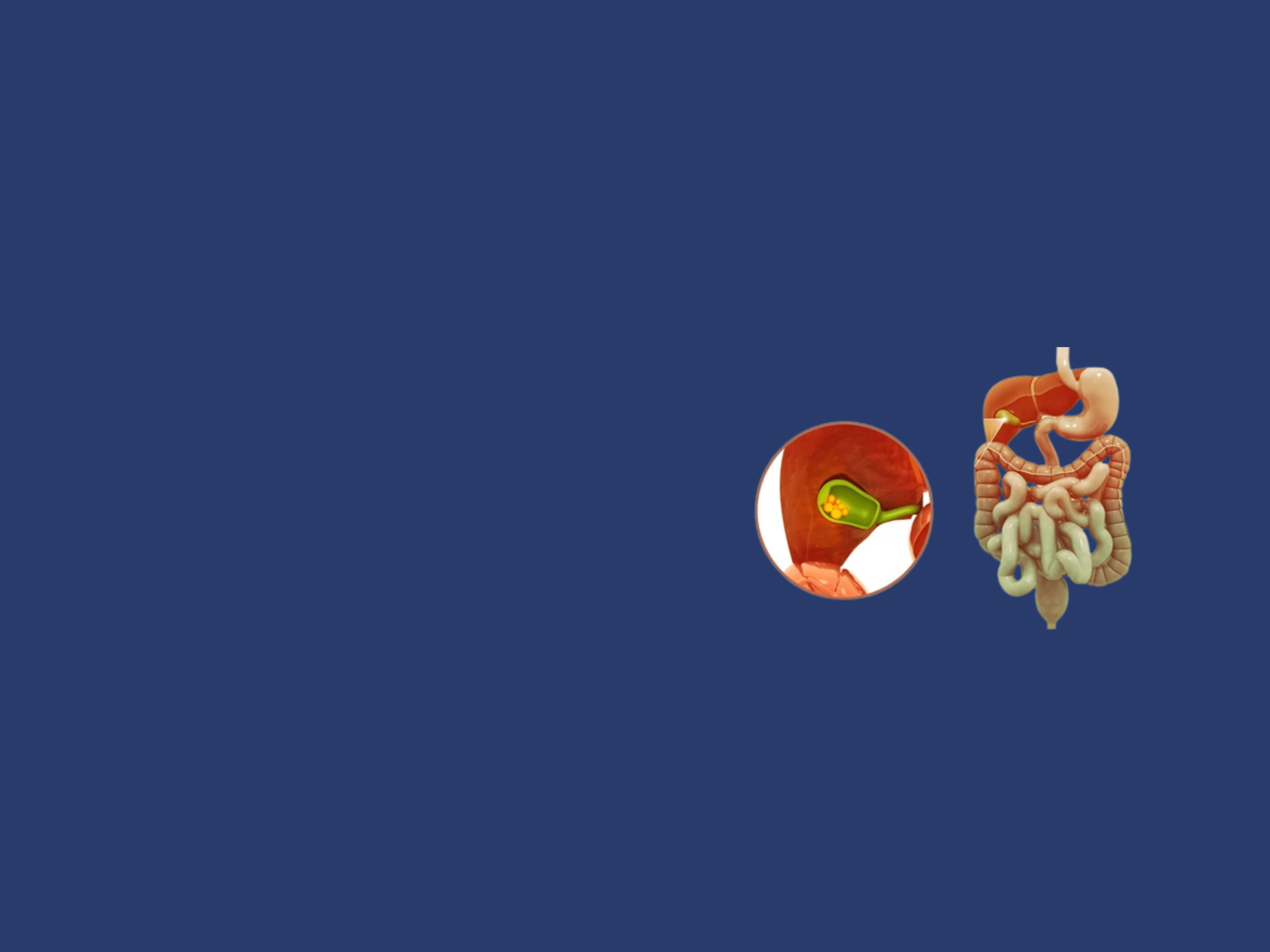
Gall Bladder & Bileduct Problems
The gallbladder is a sac situated under the liver. It stores and concentrates bile produced in the liver.
Overview
Gallbladder disease includes infection, inflammation, stones or blockage of the gallbladder. Bile duct is a tube that carries bile from the liver and gallbladder, through the pancreas, and into the small intestine.The bile pipe begins where the ducts from the liver and gallbladder join and finishes at the small intestine. It is essential for the biliary system. Infections, gallstones, and cancer can result in bile duct issues.
What are the Common Surgeries?
Stones in Gallbladder
presented with pain abdomen, nausea, vomiting and tenderness over right side of abdomen. Patient requires laparoscopic cholecystectomy.
Stones in bile duct
comprised of cholesterol or bile salts common components of bile that have hardened into stone. These stones cause sudden pain, jaundice and pancreatitis. Gall bladder stones are treated with laparoscopic cholecystectomy. Bile duct stones treated with minimally invasive endoscopic techniques.
Cancer gallbladder
cancer arising in gallbladder. Gallbladder cancer is difficult to diagnose because it often causes no specific symptoms and signs. Most gallbladder cancer diagnosed at late stage, where prognosis is often poor. Treatment of cancer at gall bladder cancer hospitals in Secunderabad depends on stage of disease from simple cholecystectomy to extended cholecystectomy and sometimes require hepatectomy.
Cholangiocarcinoma
refer to bile duct cancers arising in intrahepatic, perihilar and extrahepatic bile ducts exclusive of gallbladder or ampulla. Tumor involving proper hepatic duct bifurcation are referred as klatskin tumour or perihilar cancer. Diagnosed with CT scan and MRI of abdomen.
Choledochal Cyst
Refer to cystic dilation of bile duct. May be congenital or acquired. Aquired cyst may be result of abnormal pancreatic biliary junction. Clinical presentation is jaundice, pain in upper abdomen and mass per abdomen. Patients requiring treatment now generally undergo cyst excision and hepaticoenterostomy
Common symptoms might include:
- Pain abdomen in right upper abdomen
- Jaundice
- Fever
- Loss of appetite
- Loss of weight
